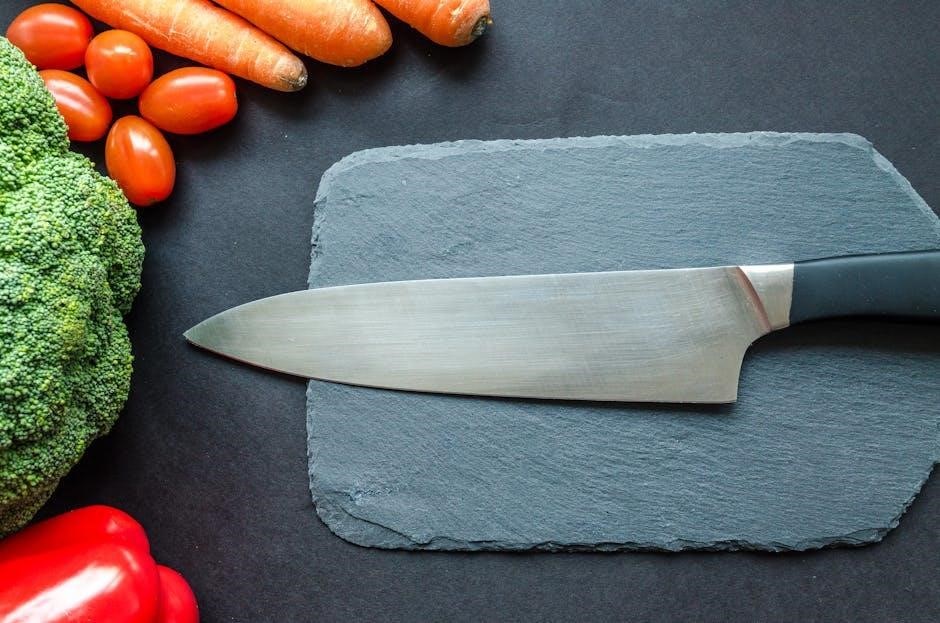Valve guide cutting is a critical process in engine repair, ensuring precise alignment and proper sealing of valves for optimal performance and longevity. Modern machining techniques and specialized tools enable accurate reaming and cutting, crucial for maintaining engine efficiency and preventing damage. This section introduces the fundamentals of valve guide cutting, its importance, and the advanced methods used to achieve precision.
1.1 Overview of Valve Guide Cutting
Valve guide cutting involves precise machining to ensure proper alignment and sealing of valve stems within engine cylinder heads. This process uses specialized tools like triple air-float centering systems and carbide-tipped cutters to maintain accuracy. Reaming and cutting operations are critical for achieving concentricity, ensuring optimal engine performance and durability. Modern techniques focus on consistency and precision to meet demanding industrial standards.
1.2 Importance of Precision in Valve Guide Machining
Precision in valve guide machining is essential for ensuring proper valve stem sealing, reducing wear, and preventing engine damage. Misalignment or irregularities can lead to inefficient combustion and increased emissions. High-precision techniques, such as triple air-float centering systems, ensure concentricity and accuracy, critical for maintaining engine performance and longevity. Consistency in machining directly impacts overall engine reliability and operational efficiency, making precision paramount in this process.

Machine Types for Valve Guide Cutting
Various machine types, including manual and automatic models, cater to specific needs in valve guide cutting. Specialized machines like the Comec FSV100 and Rottler SG80A offer precision for automotive and heavy-duty applications, ensuring accurate machining and efficiency in engine repair processes.
2.1 Manual vs. Automatic Valve Seat Cutting Machines
Manual valve seat cutting machines offer cost-effectiveness and simplicity for small-scale operations, relying on operator skill for precision. Automatic machines, like the Comec FSV100, provide high-speed, consistent results, ideal for large-scale production. Both types cater to different needs, with automatic machines excelling in precision and efficiency, while manual machines remain versatile for specialized or low-volume tasks.
2.2 Specialized Machines for Multi-Valve Cylinder Heads
Specialized machines for multi-valve cylinder heads, like the Comec FSV100, feature triple air-float centering systems, ensuring precise alignment and concentricity. These machines are designed to handle complex geometries and high-precision requirements, making them ideal for automotive and motorcycle applications. They offer versatility and accuracy, enabling efficient machining of multiple valve guides and seats in a single setup, reducing production time and enhancing consistency.
Machining Process and Techniques
Advanced machining techniques, including triple air-float centering and precision reaming, ensure accurate valve guide cutting. These methods optimize alignment and surface finish, critical for engine performance and durability, while minimizing material waste and ensuring consistent results across various applications.
3.1 Triple Air-Float Centering System
The triple air-float centering system ensures precise alignment during valve guide machining. This advanced technology utilizes compressed air to float the workhead, maintaining concentricity and minimizing deviation. It is particularly effective for multi-valve cylinder heads, where accuracy is critical.
By eliminating mechanical stress, the system achieves consistent results, reducing the risk of uneven cutting and improving overall engine performance. Its versatility makes it ideal for high-precision applications in automotive and industrial machining.
3.2 Reaming and Cutting Operations
Reaming and cutting operations are essential for creating precise valve guide surfaces. These processes ensure accurate alignment and minimal material removal. Advanced machines with triple air-float systems enable smooth, vibration-free operations. The use of carbide-tipped cutters and form tools ensures consistent results, maintaining the critical dimensions required for proper valve function and engine performance.
3.3 Achieving Concentricity in Valve Guides
Achieving concentricity in valve guides ensures proper valve alignment and sealing. Advanced machining techniques, such as triple air-float centering systems, maintain precise guide-to-seat alignment. Form tools and precision cutters help maintain consistent dimensions, ensuring minimal runout and optimal engine performance. These methods are crucial for preventing leaks and wear, ensuring long-term engine reliability and efficiency.
Tools and Cutters for Valve Guide Machining
Specialized tools like carbide-tipped cutters and pre-shaped form tools ensure precision in valve guide machining. These tools maintain consistency and enable multi-angle cutting, enhancing overall machining efficiency and accuracy.
4.1 Carbide-Tipped Cutters for Consistency
Carbide-tipped cutters are essential for achieving consistent results in valve guide machining. Their durability and resistance to wear ensure precise, repeatable cuts. These tools maintain sharp edges, minimizing the risk of deviations and ensuring accurate valve guide dimensions. Their ability to handle high-speed operations without compromising quality makes them a preferred choice for maintaining consistency in both automotive and industrial applications.
4.2 Pre-Shaped Cutters for Multi-Angle Machining
Pre-shaped cutters are designed to handle multi-angle machining efficiently, eliminating the need for multiple tools. These cutters are precision-engineered to cut all valve angles in a single operation, ensuring consistency and reducing setup time. Their advanced geometry allows for accurate seat widths and locations, making them ideal for complex cylinder head configurations in high-performance engines.

Safety Considerations
Proper PPE, including gloves and safety glasses, is essential. Ensure machines are set up correctly and operated according to manufacturer guidelines to prevent accidents and injuries.
5.1 Personal Protective Equipment
Wearing proper PPE, including safety glasses, gloves, and protective clothing, is crucial when cutting valve guides. This ensures protection from metal shavings and debris during machining operations. Always follow safety guidelines to minimize risks and prevent injuries. Proper PPE is essential for maintaining a safe working environment and ensuring operator well-being during valve guide cutting processes.
5.2 Machine Setup and Operation Safety
Proper machine setup is critical for safe valve guide cutting. Ensure the machine is level, securely mounted, and free from obstructions. Avoid overloading the machine, as this can lead to damage or injury. Always follow operational guidelines, use appropriate tools, and maintain a clean work area. Regularly inspect equipment and ensure all safety features are functional before starting operations.
Applications of Valve Guide Cutting Machines
Valve guide cutting machines are essential in automotive engine repair, heavy-duty industrial applications, and marine engineering, ensuring precise valve alignment and optimal engine performance across various industries.
6.1 Automotive Engine Repair
Valve guide cutting machines are indispensable in automotive engine repair, enabling precise reaming and cutting of valve seats and guides. They ensure proper valve alignment, sealing, and engine performance. These machines are widely used for car engines, motorcycles, and heavy-duty vehicles, offering versatility and accuracy. Their ability to handle multi-valve cylinder heads makes them essential for modern automotive applications, enhancing engine longevity and efficiency.
6.2 Heavy-Duty and Industrial Applications
Heavy-duty and industrial applications rely on advanced valve guide cutting machines for large-scale operations. These machines handle massive cylinder heads, including those for diesel engines, locomotives, and stationary engines. Capable of extended capacity and high precision, they ensure durability and performance in demanding environments. Their robust construction and powerful spindles make them ideal for industrial machinery, ensuring accurate and efficient valve guide machining.
Precision and Accuracy in Valve Guide Cutting
Precision is vital in valve guide cutting to ensure proper valve alignment and engine performance. Advanced machining technologies, like triple air-float systems, maintain concentricity, while carbide-tipped tools ensure consistent results.
7.1 Role of Air-Float Centering Systems
Air-float centering systems play a crucial role in maintaining precision during valve guide cutting. By utilizing compressed air, these systems ensure the workhead remains perfectly centered, minimizing vibrations and enhancing accuracy. This technology is particularly effective in multi-valve cylinder heads, ensuring consistent results and achieving optimal concentricity for reliable engine performance.
7.2 Maintaining Consistency with Form Tools
Form tools are essential for maintaining consistency in valve guide cutting, ensuring precise angles and dimensions. Pre-shaped carbide cutters eliminate the need for adjustable blades, reducing variability. These tools allow for uniform machining across multiple valve angles in a single step, enhancing accuracy and reliability in high-performance engine applications.

Common Challenges and Solutions
Material variations and machine overload are common challenges in valve guide cutting; Proper setup, tool selection, and regular maintenance help mitigate these issues effectively.
8.1 Dealing with Material Variations
Different materials, such as bronze or steel, require specific cutting tools and techniques. Harder materials may demand carbide-tipped cutters for consistency, while softer materials need precise setting adjustments to avoid damage.
Operators must ensure proper tool alignment and spindle speed to handle material variations effectively, maintaining accuracy and preventing wear on cutting tools.
8.2 Avoiding Machine Overload
Avoiding machine overload ensures optimal performance and longevity. Proper tool selection and spindle speed monitoring are crucial to prevent excessive wear. Operators should adhere to manufacturer guidelines for material thickness and cutting depths to maintain efficiency and safety.
Regular maintenance and timely replacement of worn parts further prevent overload conditions, ensuring precise and consistent valve guide cutting operations.

Maintenance and Upkeep of Machining Equipment
Regular cleaning, lubrication, and sharpening of cutting tools are essential for maintaining machining equipment efficiency and accuracy in valve guide cutting operations.
9.1 Regular Cleaning and Lubrication
Regular cleaning of machining equipment prevents residue buildup, ensuring precise valve guide cutting. Lubrication of moving parts reduces friction and wear, maintaining optimal performance. Use high-quality cleaning agents and lubricants to protect machinery and extend its lifespan. Proper maintenance schedules should be followed to avoid contamination and ensure consistent cutting accuracy.
9.2 Sharpening and Replacing Cutting Tools
Sharpening cutting tools regularly ensures optimal performance and precision in valve guide machining. Use specialized grinding equipment to maintain sharp edges and consistent profiles. Replace worn or damaged tools promptly to prevent subpar cuts and potential machine damage. High-quality carbide-tipped cutters and form tools are essential for maintaining accuracy. Regular inspections and adherence to manufacturer guidelines are critical for prolonging tool life and ensuring reliable results.
Valve guide cutting is essential for engine performance, requiring precision and advanced tools. Future trends include automated machining and improved materials for enhanced durability and efficiency.
10.1 Summary of Key Considerations
Valve guide cutting requires precision, specialized tools, and adherence to safety protocols. Modern machines, like those with triple air-float centering systems, ensure accuracy. Pre-shaped carbide cutters maintain consistency, while regular maintenance and tool sharpening are crucial for long-term efficiency. Automation and advanced materials are emerging trends, promising enhanced durability and performance in future valve guide machining applications.
10;2 Future Trends in Valve Guide Machining
The future of valve guide machining lies in advanced CNC automation and programmable cycles for precision cutting. High-volume machines with extended capacity will cater to heavy-duty applications, while ergonomic designs enhance operator efficiency. Emerging trends include touch-screen controls, electronic handwheels, and automated tool sharpening, ensuring faster setups and consistent results, driving the industry toward smarter, more efficient machining solutions.
